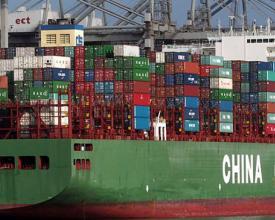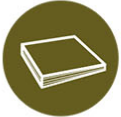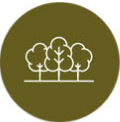DHA eNews - U.S. Continues Investigations Into Imported Hardwood Plywood
Trade policy dominates the headlines again and the changes will impact the decorative hardwoods industry. On July 3, the U.S. International Trade Commission took an essential next step in the trade case brought by the Coalition for Fair Trade of Hardwood Plywood when the commissioners unanimously voted to continue investigation of hardwood plywood dumping by China, Vietnam, and Indonesia. Although preliminary countervailing duty determinations are due on August 15, importers should not rush to import hardwood plywood before then. If imports increase, duties can be applied retroactively.
The reciprocal tariff agreement with Vietnam is also likely to reduce imports from Vietnam, as baseline tariffs are reported to be set at 20%. However, the agreement also includes a provision that doubles the rate for transshipped Chinese wood products, which has been a huge problem for our industry. President Trump also announced a delay in the reciprocal tariffs to August 1 and sent letters to many countries in Asia with new rates. My guess is that Vietnam's deal may be the Asia model. Recall that the reciprocal tariffs don't apply to the wood products covered by the Section 232 national security review, which could come any day now.
If you have questions or comments, contact me. I look forward to hearing from you.

Keith A. Christman, President

On July 3, The U.S. International Trade Commission "determined that there is a reasonable indication that a U.S. industry is materially injured by imports of hardwood and decorative plywood from China, Indonesia, and Vietnam that are allegedly sold in the United States at less than fair value and subsidized by the governments of China, Indonesia, and Vietnam."
The decision was unanimous: all three commissioners voted yes. As a result, the U.S. Department of Commerce will continue its investigations of imports of hardwood and decorative plywood from China, Indonesia, and Vietnam. Commerce will determine preliminary countervailing duties on or about August 15 and preliminary antidumping duties on or about October 29.
On July 2, President Trump announced a trade pact with Vietnam. Trump stated that the U.S. would impose a 20% tariff on goods from Vietnam and a 40% transshipping tariff on goods originating in another country and transferred to Vietnam for final shipment to the U.S. In 2023, Vietnam was found to be transshipping Chinese plywood to circumvent U.S. import duties.
The tax and budget bill, signed into law on July 4, includes business tax incentives to promote growth: the R&D tax credit, 100% bonus depreciation, and 20% deduction for pass-through business entities. It increases the maximum amount a taxpayer may expense to $2.5 million, restores a more favorable standard for calculating interest deductions, and raises the estate tax exemption to $15 million. However, it eliminates many clean energy credits, including those for biomass stoves and boilers.
On July 3, the U.S. Department of Agriculture published a comprehensive reform of the National Environmental Policy Act, consolidating seven separate rules into a single, streamlined regulation. This cut the regulatory text by 66%. The new regulation is designed to speed up projects from logging and wildfire mitigation to broadband and infrastructure development in rural communities. The interim rule is effective immediately.
On June 23, the U.S. Department of Agriculture rescinded the 2001 Roadless Rule, which prohibited road construction, reconstruction, and timber harvest on about 60 million acres of national forest. USDA stated that this will facilitate fire prevention and responsible timber harvest.
On June 17, Canada expanded sanctions against Russia. The government introduced a wide range of new restrictions on imports and exports, including a ban on imports of virtually all Russian wood, lumber, and timber.
On July 7, President Trump sent an initial batch of letters to other nations informing them of new tariff rates—but those tariffs won't go into effect until August 1. The administration will notify countries of the tariff rate they will pay to do business in the U.S., essentially setting aside efforts to broker trade deals with dozens of other nations.
Malaysia's timber exports may gain a competitive edge in the U.S. market due to higher tariffs imposed on rivals like Vietnam and Indonesia. The U.S. is the largest buyer of Malaysian furniture, accounting for over half of the country's furniture exports. In 2022, Malaysia exported timber and timber products worth more than $1.8 billion to the U.S., nearly double the amount in 2018.
DHA announced the kickoff of the process of revising the industry consensus standard for engineered wood flooring, ANSI/HPVA EF-2020. This is part of the five-year review process required for the ANSI standard, which includes requirements for grading, bond line, moisture content, machining, formaldehyde emissions, and much more.
DHA welcomes new member Beaulac Veneers! The family-owned veneer manufacturer, located in Quebec, was founded in 1993. The company specializes in sliced veneer from 0.6 mm to 3.2 mm, as well as cut-to-size, spliced, and custom-sliced veneer.
The comprehensive report, authorized by the Oregon legislature, is a detailed analysis that confirms the critical role of Oregon's forest sector in achieving the state's economic, environmental, and public safety goals. The report underscores that the forest sector provides some of Oregon's most essential, high-demand, and technically advanced jobs. It also emphasizes the importance of workforce readiness in addressing current crises: wildfire risk, housing demand, and forest health.
After the 2025 U.S. Houzz Emerging Trends Summer Report identified wood drenching as a trend, data showed that online searches for wood details in living rooms and kitchens soared. Many more designers are actively seeking ways to incorporate more wood in their designs.
Comments are due on July 21 on the introduction of genetically engineered, blight-resistant chestnut trees. The open comment period is the final step in the process of bringing the American chestnut tree back to northeastern forests, scientists say. Researchers began the process by experimenting with genetic engineering to introduce resistance to blight. The first genetically engineered trees were planted in field trials in 2006.
A new report reveals that Canada's 2023 wildfire season, the worst on record, led to more greenhouse gas emissions than all other sources combined. Canadian officials have already warned that the 2025 wildfire season could be the second-worst on record.
Which rainforests are located in the U.S., and where are they?





